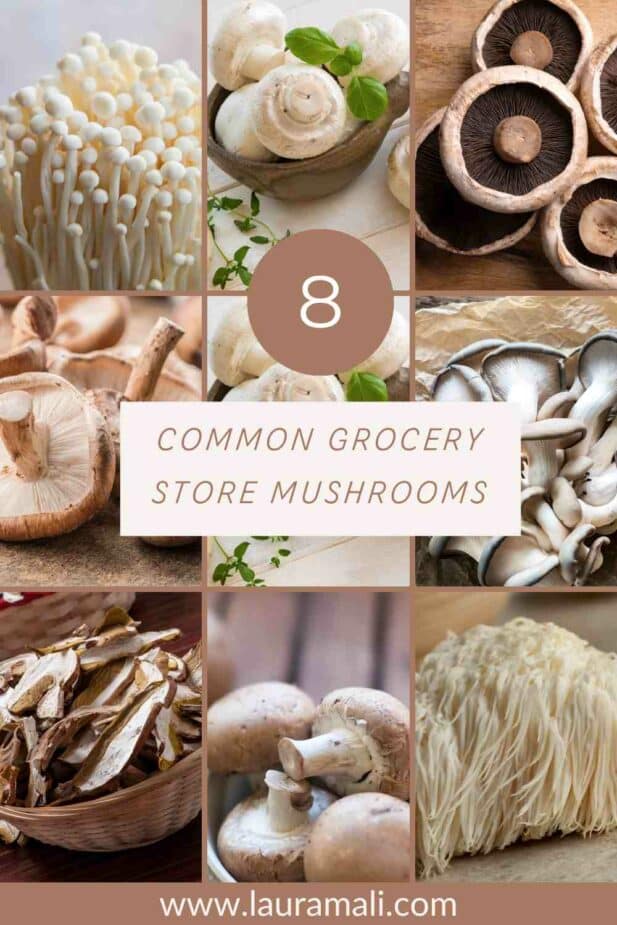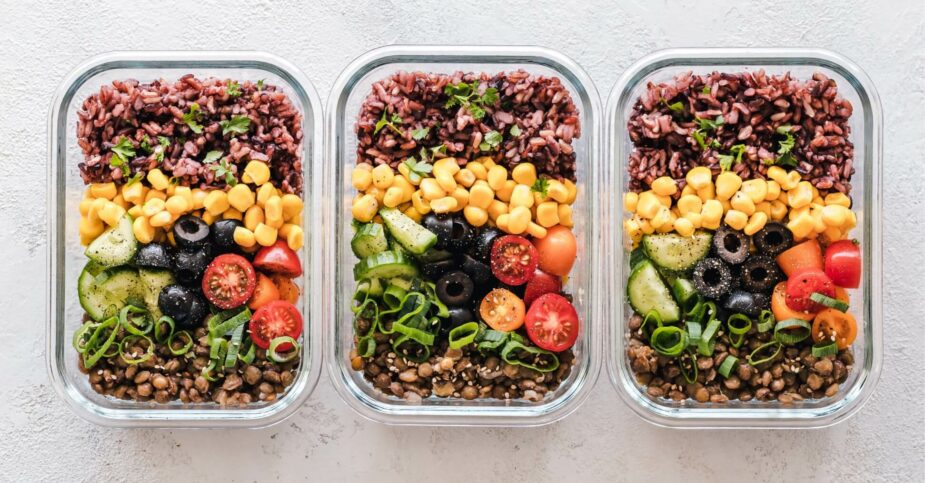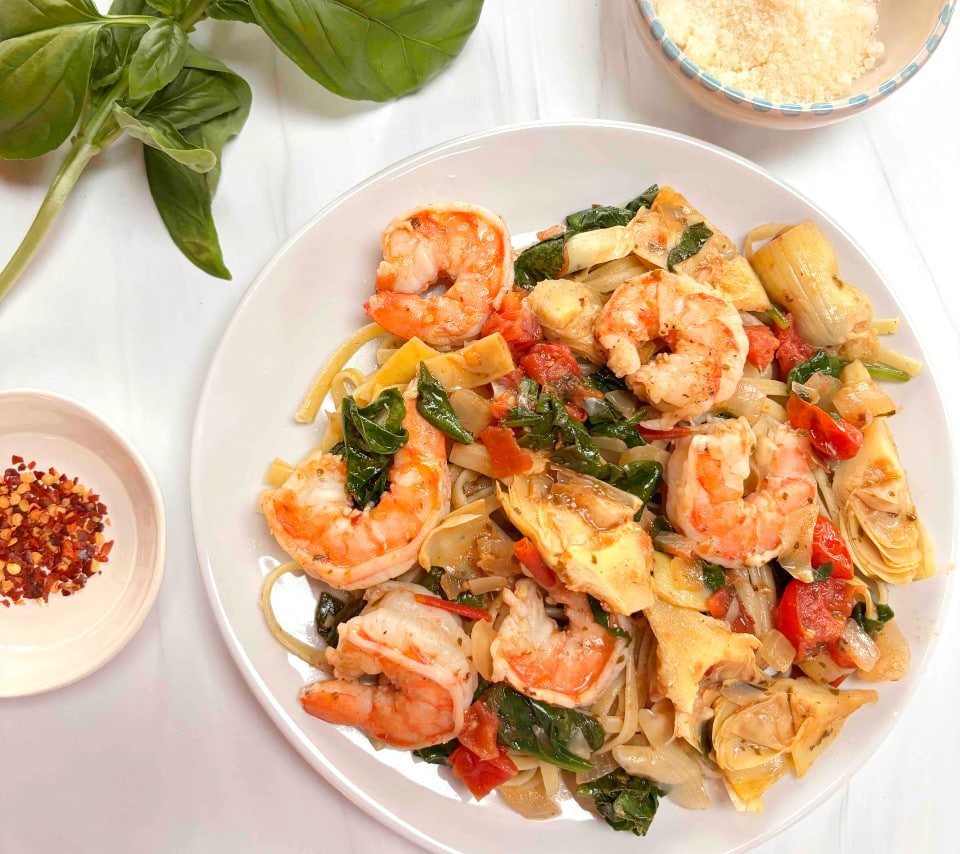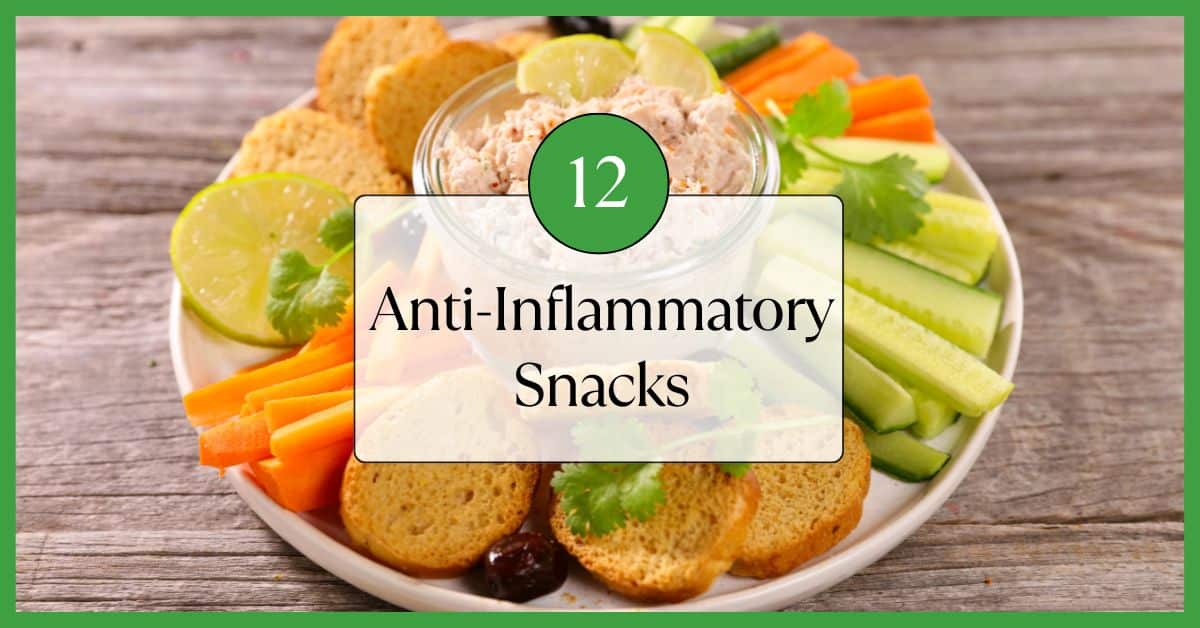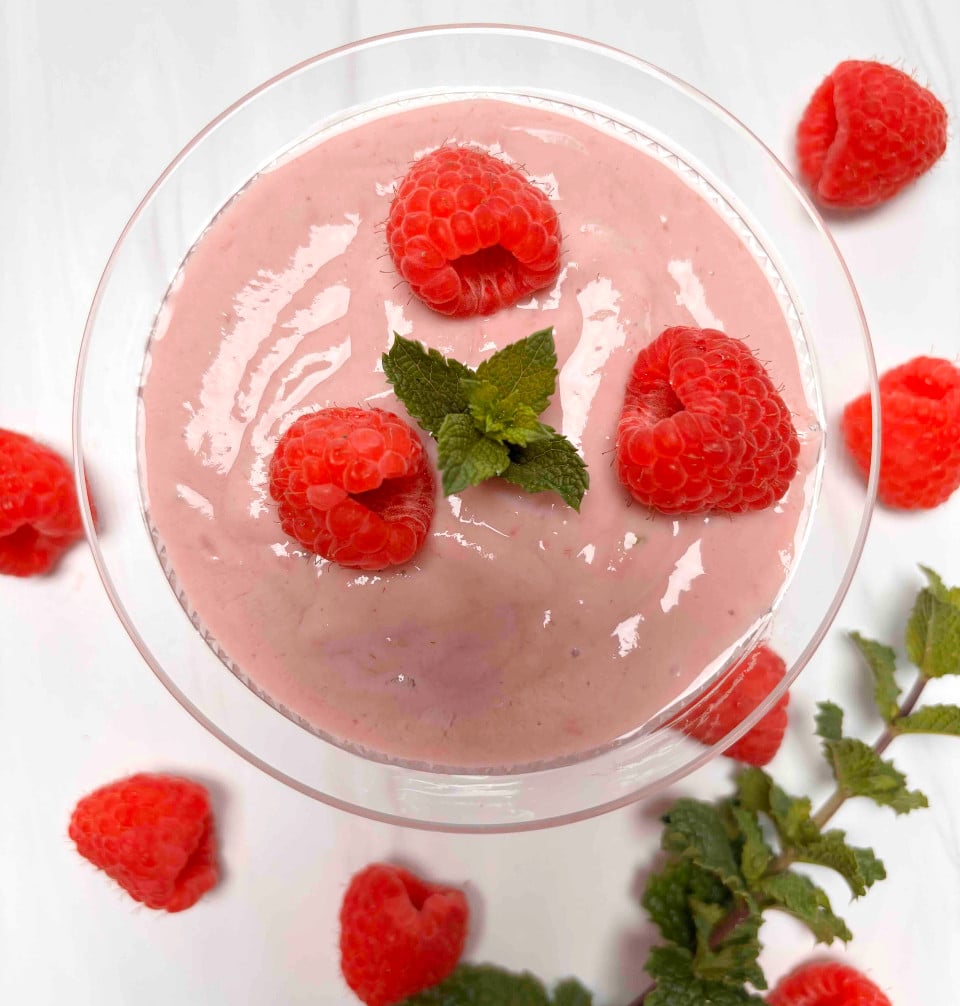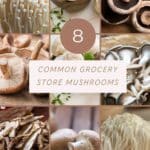There are a variety of mushrooms available in most grocery stores today and we’ll take a look at 8 of the most common you might find. Some mushroom varieties you may be more familiar with than others so let’s dig in and take a look at their flavor, nutrition, and health benefits, and most importantly: how to use them in your next mushroom-boosted recipe.
Table of Contents
8 Common Grocery Store Mushrooms
Have you noticed a growing area in the produce section of your grocery store recently? Mushrooms are the “it” vegetable these days. While not actually a “vegetable” they are packed with nutrition and health benefits so retailers are adding new varieties and allocating more space for these fungi.
However, among the baskets of loose mushrooms and mushroom packages at the grocery store, it’s a challenge to know which mushroom is which, and what variety is best to use in your dish. Let’s look at some of the most common, and a couple of emerging varieties you may be seeing in your store, discuss their flavor and textures, and how I like to use them in cooking.
Button mushrooms
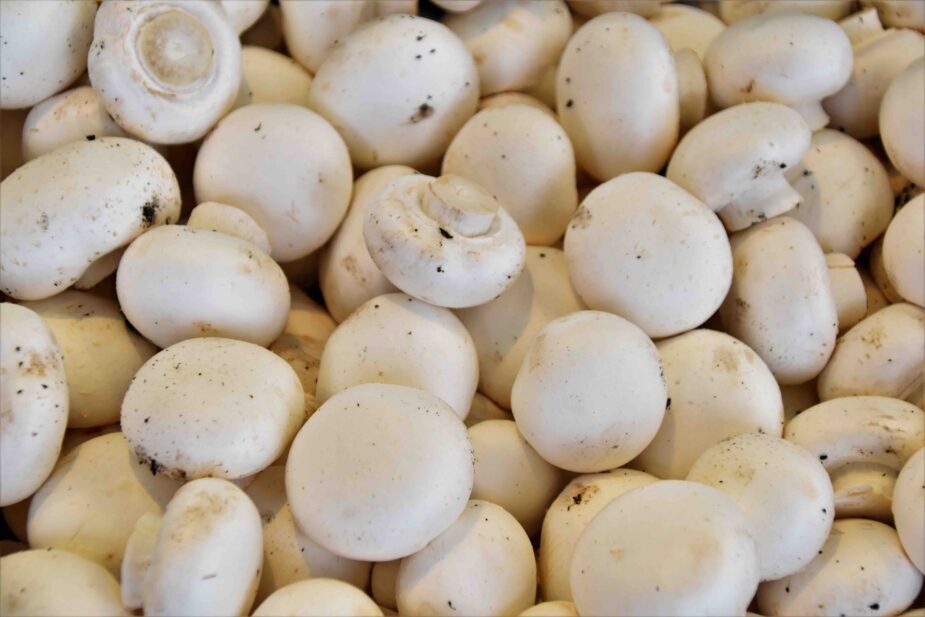
These are also called white mushrooms and are also known as Champignon mushrooms. In French, “champignon” means “mushroom” but these little white babies often go by this name too. (How’s that for sounding fancy?) They are the most commonly consumed of all mushroom varieties.
Did you know that button mushrooms actually change their name as they get older? They are just a younger version of the crimini mushrooms. And even older, more mature button mushrooms are the popular portobello mushroom. It’s like the artist formerly known as Prince: new era, new name!
Button mushrooms have a pretty mild flavor, but still include savory notes making them a nice addition to salads, pizzas, and beef stews. When you cook them, their umami, or savory flavor, is stronger and they develop a rich and smooth texture.
1 serving of button mushrooms (about 5 mushrooms) has
- 20 calories
- 0g fat
- 0 mg cholesterol
- 5 mg sodium
- 3.7g carbohydrates
- 1.5g fiber
- 3 grams of protein
- a little vitamin D
- 22% DV of niacin
- 31% DV riboflavin
- 33% DV selenium
- 40% DV copper
Let’s talk about copper for a moment. Copper is one of those nutrients that never seems to get in the limelight, but it should: it is really important for our brain health. Copper is important throughout our lives. Babies need it for their brains to develop properly and as we age we need it to protect our blood vessels and nervous system. There is some research to suggest that people who have higher levels of copper have lower rates of Alzheimer’s disease.1
While more research is needed, I’d say it’s one more reason to add mushrooms to your grocery list.
Key benefits of button mushrooms: Reducing the risk of Alzheimer’s Disease.
My favorite way to use button mushrooms: As a topping on pizza
Cremini mushrooms
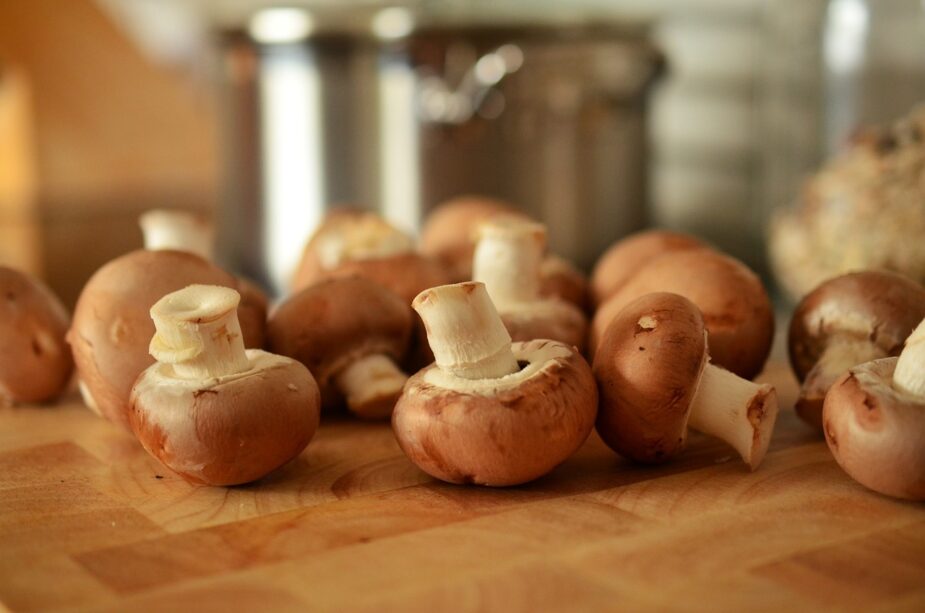
One of the most popular varieties of grocery store mushrooms are “baby bella” mushrooms. They have an incredibly rich flavor that works well in many dishes.
Cremini mushrooms are related to white button mushrooms and portobello. They are a slightly more mature mushroom than the button mushroom and a younger version of the portobello.

Cremini mushrooms are often called “baby bellas” because they are actually baby portobello mushrooms!
Their deep, rich flavor makes them a delicious addition to casseroles, stews, and pasta dishes. Because they have such a savory flavor, using them helps decrease the need for extra salt in many of these dishes.
Cremini mushrooms have a similar nutrition profile as the white button mushroom but are slightly lower in protein, selenium, and copper.
One serving of cremini mushrooms (about 4 mushrooms) has
- 24 calories
- 0 g fat
- 0 mg cholesterol
- 6 mg sodium
- 3 g carbohydrates
- 1.5g of fiber
- 2.5 g of protein
- 0 vitamin D* (see below)
- 20% DV of niacin
- 32% DV riboflavin
- 22% DV selenium
- 29% DV copper
*You may also find crimini or “Baby Bella’s that have been exposed to UV light, making them a good source of vitamin D. The Monterey brand of mushrooms has some varieties that are exposed to UV light and high in Vitamin D. They are available in many grocery stores nationwide!
Key benefits of cremini mushrooms: Supporting bone health
My favorite way to use cremini mushrooms is: Casseroles, like this Hearty Italian Pasta Bake
Portobello mushrooms
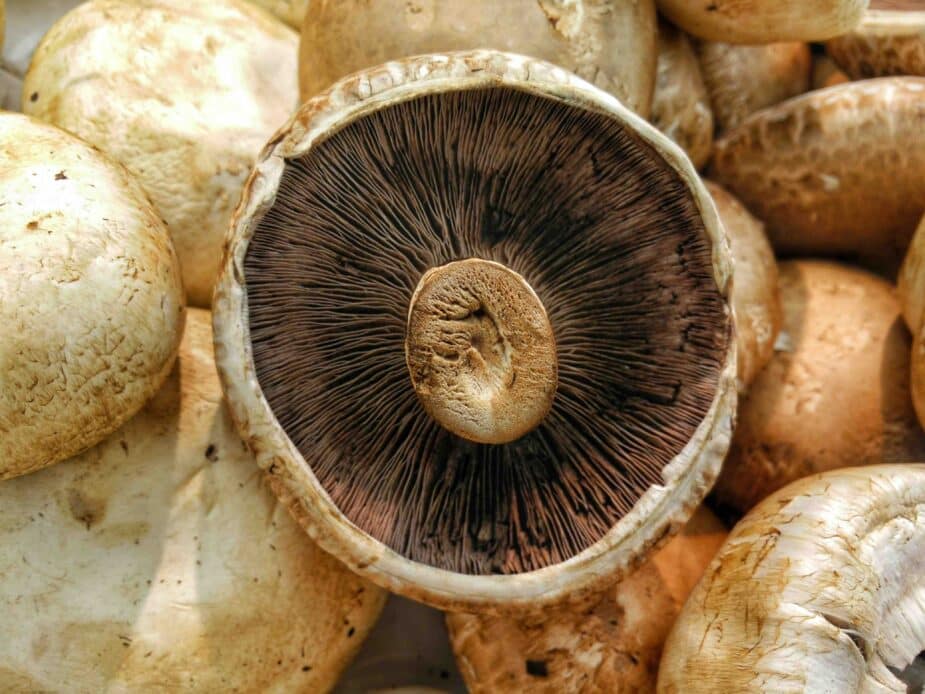
This big baby is one of the largest mushrooms available. The typical size for a portobello mushroom is anywhere from 3 – 6 inches in diameter.
Portobellos are often used to replace meat and served as burgers or in soups and stews. You can chop the entire mushroom, stem and all, and cook it like you would ground beef. See my blended burger recipe for how to do this!
Portobello mushrooms have a rich savory flavor and firm texture which makes them an ideal plant-based substitution for beef. They are often marinated and then grilled. They are also delicious stuffed! Stuff them with bread crumbs, Italian sausage, or a variety of vegetables and herbs.
Like their smaller, younger counterparts, portobello mushrooms are low in calories and carbs but are also a bit lower in selenium and copper than the others.
One serving of portobello mushrooms (1 large mushroom) has
- 26 calories
- 0 g fat
- 0 mg cholesterol
- 6 mg sodium
- 4 g carbohydrates
- 1.6g of fiber
- 2 g of protein
- 0 vitamin D
- 20% DV of niacin
- 30% DV riboflavin
- 22% DV selenium
- 19% DV copper
Key benefits of portobello mushrooms: Supporting weight loss
My favorite way to use portobello mushrooms: Italian Style Stuffed Mushrooms!
Shiitake mushrooms
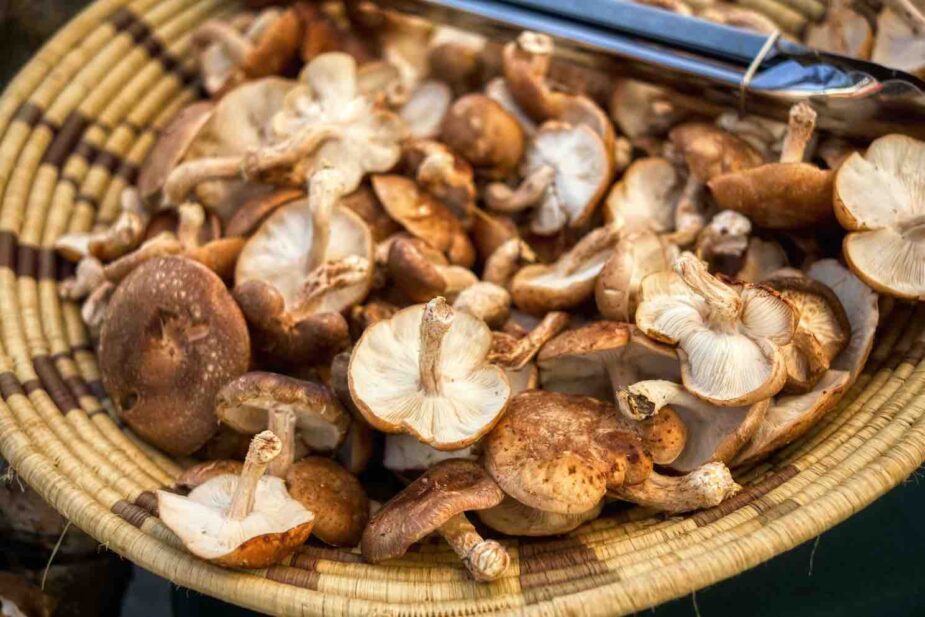
Shiitake mushrooms are small, ivory-colored mushrooms that are shaped like an umbrella and have curved stems. They originated in Eastern Asia and have been used in medicinal preparations for centuries.2
Shiitake means “mushroom of the shii.” “Shii” refers to a tree and “take” means mushroom in Japanese.
In the wild, shiitake mushrooms grow on dead oak trees or other hardwood. The majority of shiitake mushrooms are still grown in Japan but are also now cultivated in other parts of the world. When grown commercially they are cultivated in sawdust blocks on a large scale.
Shiitake mushrooms have a delicate texture and mild earthy flavor. They are delicious in stir-fries and casseroles and combined with other mushrooms for a rich mushroom risotto.
Shiitake mushrooms are lower in copper, selenium, and B vitamins than other varieties but higher in fiber, especially beta-glucan, a soluble fiber.
One serving of shiitake mushrooms (about 4 mushrooms) has
- 26 calories
- 0 g fat
- 0 mg cholesterol
- 0 mg sodium
- 6 g carbohydrates
- 3 g of fiber (2g from beta-glucan)
- 1,7 g of protein
- 0 vitamin D
- 13% DV of niacin
- 12% DV riboflavin
- 2% DV selenium
- 4% DV copper
Key benefits of shiitake mushrooms: Promotes gut health
My favorite way to use shiitake mushrooms: Teriyaki Salmon Rice Bowl
Oyster mushrooms
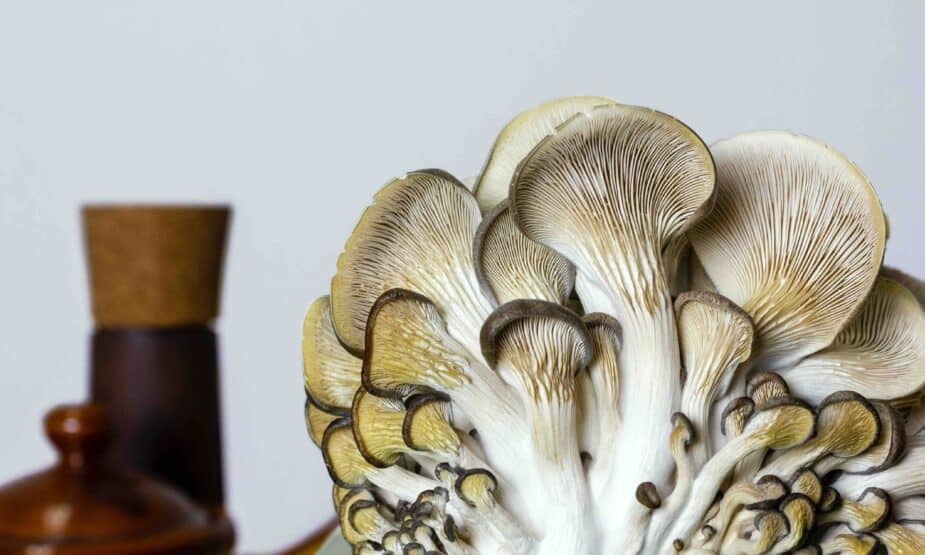
These cool mushrooms are usually sold in bunches or “clumps.” They have a long stem and a short, trumpet-like top. The clumps can be pulled apart into individual mushrooms for cooking.
They are typically used in Japanese and Chinese dishes and add a light, savory flavor and have a velvety, soft texture. They are often used in stir-fry dishes but can be added to soups and stews.
The nutritional value of oyster mushrooms is similar to other mushroom varieties with the exception of selenium and beta-glucan. This mushroom does not contain much selenium but is still a good source of copper and B vitamins. It also has double the amount of beta-glucan as white button mushrooms and is higher in fiber than most other varieties.
Why is beta-glucan important? Beta-glucan may be helpful in stabilizing blood glucose, supporting gut health, reducing blood pressure, and may help reduce cholesterol levels. A number of studies have found that consuming oyster mushrooms helped reduce fasting glucose levels by 12 – 20%.3
One serving of oyster mushrooms (about 6 mushrooms) has
- 37 calories
- 0 g fat
- 0 mg cholesterol
- 0 mg sodium
- 6 g carbohydrates
- 5.5 g of fiber (2.7g from beta-glucan)
- 2.6 g of protein
- 0 vitamin D
- 32% DV of niacin
- 17% DV riboflavin
- 2% DV selenium
- 12% DV copper
Key benefits of oyster mushrooms: May help reduce blood sugar levels.
My favorite way to use oyster mushrooms: In a stir fry or blended with other mushrooms in a hearty mushrooms risotto.
Enoki Mushrooms
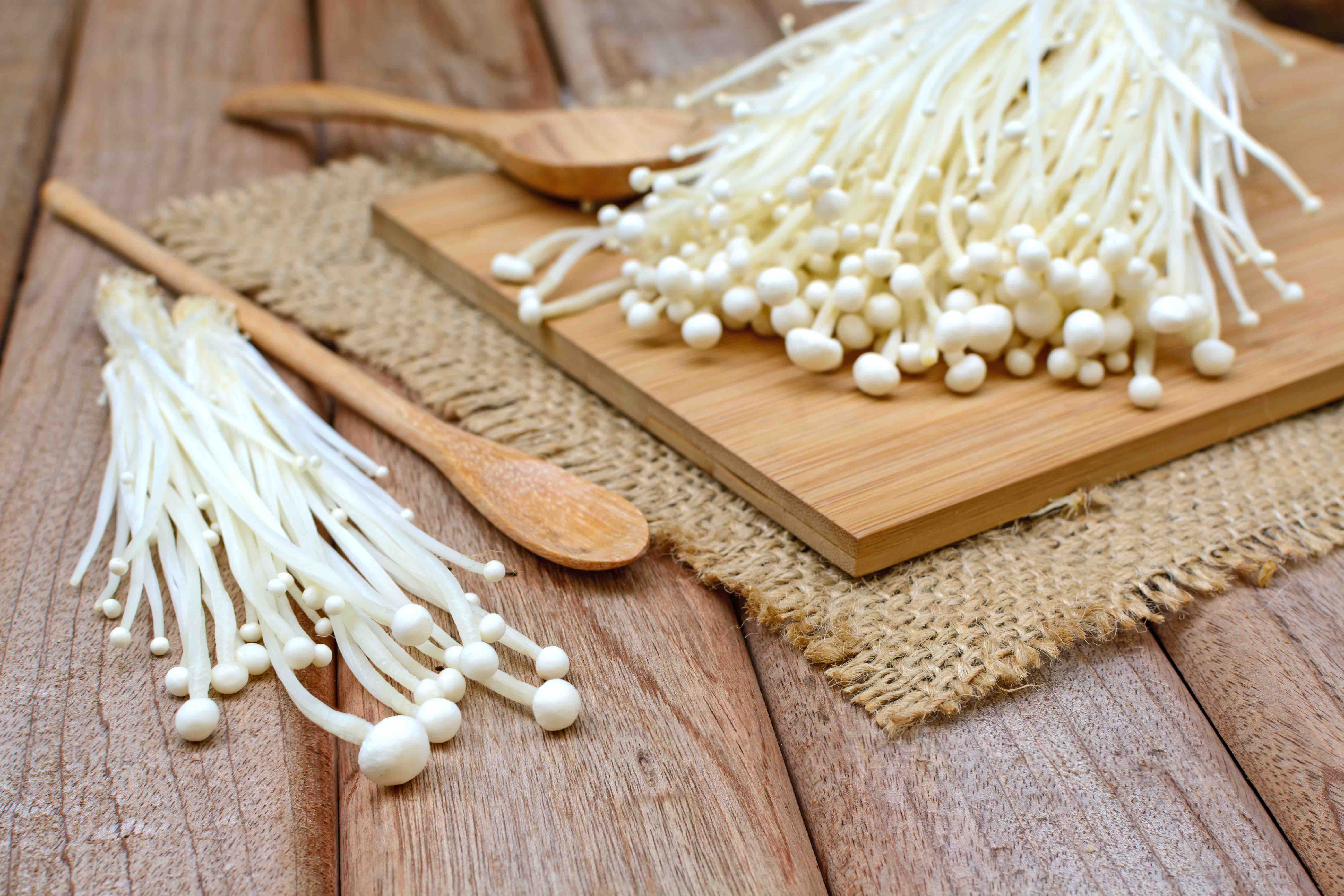
With long thin stems and tiny little heads these fun mushrooms are mild in flavor but add a nice crunch to dishes. They are typically used raw but you may find them as part of a mushroom blend and used in soups or risotto but most often they are a garnish on a stir-fry or added to a salad.
Also known as “winter mushrooms” contain a variety of antioxidants that may be helpful in reducing inflammation and could play a role in the prevention of heart disease, cancer, and diabetes.
Very little research has been done on their specific benefits, but some early research has shown the potential for helping to block the growth of cancer cells. We are a long way off from knowing if this works in humans, but early trials in the lab are promising.4
One serving of enoki mushrooms (about 1 cup) has
- 24 calories
- 0 g fat
- 0 mg cholesterol
- 2 mg sodium
- 5 g carbohydrates
- 1.7 g of fiber
- 1.7 g of protein
- 0 vitamin D
- 28% DV of niacin
- 10% DV riboflavin
- 2% DV selenium
- 8% DV copper
Key benefits of enoki mushrooms: They may help reduce the risk of cancer, heart disease, and diabetes.
My favorite way to use enoki mushrooms: Added them on top of a grain bowl
Lion’s Mane Mushrooms
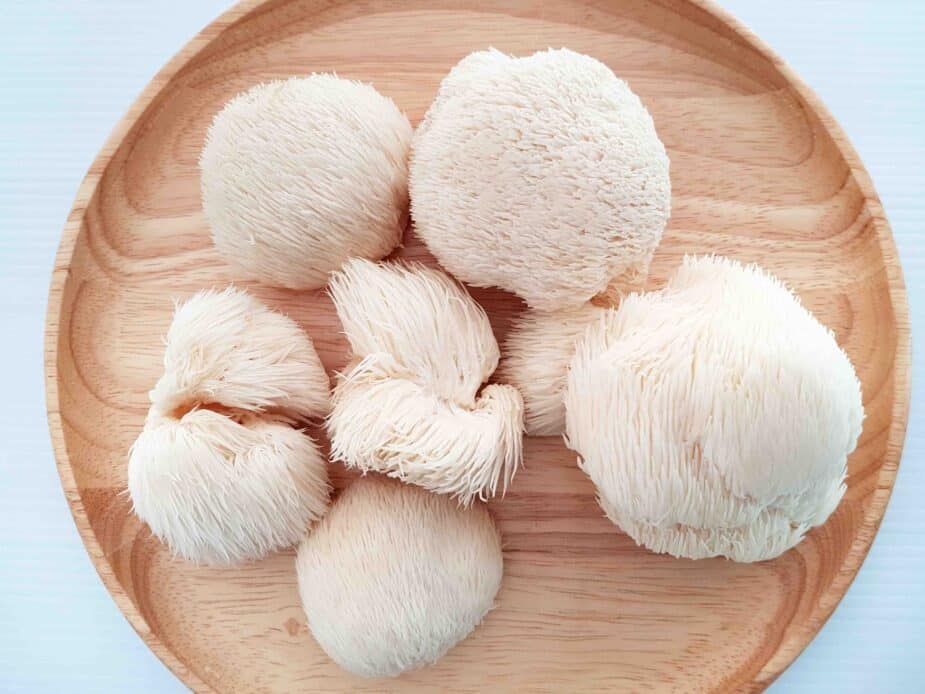
This cool mushroom gets its name from its mane-like exterior which is soft and shaggy. This large, white mushroom has been used for centuries as a medicinal treatment to fight inflammation and infection, promote good digestion, and treat insomnia.5
While a bit rarer than other mushrooms, you can often find Lion’s Mane, or “pom pom” mushrooms in specialty food stores and some higher-end grocery stores. If you’ve never seen it before, you may be worried that its shaggy exterior means it has gone bad or is growing something! Don’t fear, that is part of the mushrooms and adds to its deliciousness!
If you are a seafood lover, these may be the mushroom for you! While they are savory like other mushrooms, some people describe them as tasting a bit like seafood. They often replace crab or lobster for a meatless recipe. You may see them sauteed and tossed with olive oil or butter and served as an accompaniment.
This mushroom is known as an adaptogen. What does that mean? Adaptogens are plant compounds called phytonutrients that may reduce the harmful effects of stress and oxidation. There’s a lot of buzz surrounding the health benefits of adaptogens so keep reading to learn how mushrooms may play a role in some important areas of women’s health.
Aside from their antioxidant and phytonutrient content, lion’s mane mushrooms are higher in fiber than other mushroom varieties. Like the oyster mushroom, they are a good source of B vitamins and copper.
One serving of Lion’s Mane mushrooms (about 1, 100g mushroom) has
- 43 calories
- 0 g fat
- 0 mg cholesterol
- 0 mg sodium
- 8 g carbohydrates
- 4.4 g of fiber (2.4g from beta-glucan)
- 2.5 g of protein
- 0 vitamin D
- 10% DV of niacin
- 28% DV riboflavin
- 3% DV selenium
- 20% DV copper
Key benefits of Lion’s Mane mushrooms: Supports a healthy immune system
My favorite way to use Lion’s Mane mushrooms: Sauteed in butter and olive oil and served on the side of crab cakes.
Porcini Mushrooms
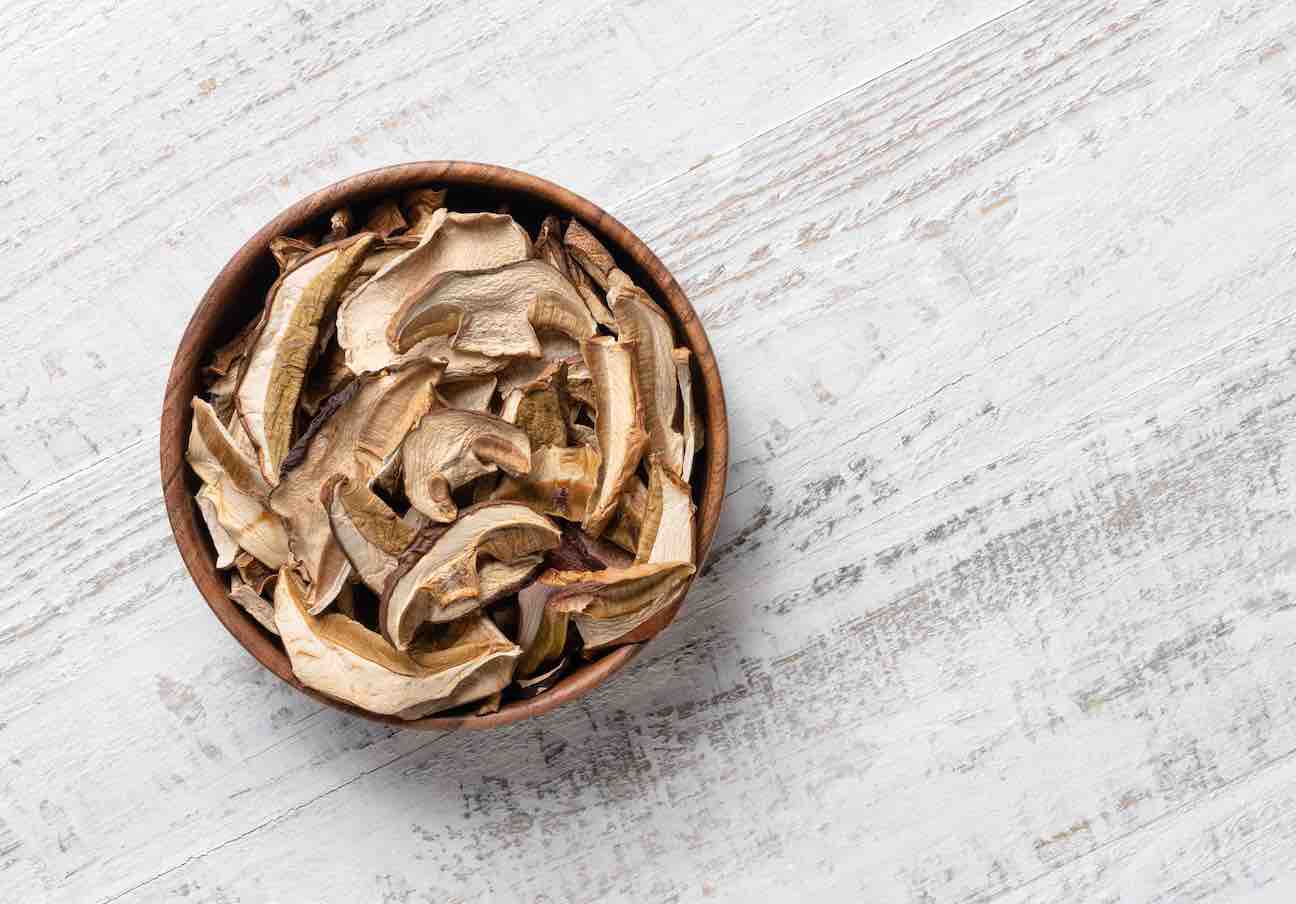
These mushrooms are usually sold as dried mushrooms and are a rich addition to soups and stews, giving them a deep, earthy flavor. You can buy them when they are in season, but they have a short growing season and are expensive if you can find them!
To use dried porcini mushrooms, place them in hot water for about 30 minutes to hydrate and soften. Drain them, but hang onto that liquid! Use it like you would beef or chicken broth. It’s delicious in soups and stews, for a rich mushroom risotto or to make gravy.
Dried porcini mushrooms have an earthy, mushroom flavor. Some describe them as having a nutty flavor, but I find them to be more earthy. They are a bit chewy but when cooked well in a soup or stew some of that disappears and they become softer.
Porcini mushrooms have many of the same nutritional properties as other mushrooms in that they contain fiber, polyphenols, and antioxidants that help support our GI tract and immune system and stabilize our blood sugar.
Research with animals has shown promise in inhibiting breast and colon cancer growth and reducing inflammation.6 This may not translate to humans so much more work needs to be done. Still, adding a handful of porcini mushrooms to your next beef and barley stew sounds like a pretty good idea to me!
One serving of porcini mushrooms (about ⅓ cup dried) has:
- 15 calories
- 0 g fat
- 0 mg cholesterol
- 0 mg sodium
- 110 g potassium
- 2 g carbohydrates
- 1 g of fiber
- 2 g of protein
Key benefits of porcini mushrooms: May help reduce inflammation
My favorite way to use porcini mushrooms: As part of a Beef and Barley Stew or creamy mushroom pasta
How to Select Grocery Store Mushrooms
How do you know a “good” mushroom from one that is over the hill or tasteless? Choosing fresh mushrooms at the grocery store is easier than you may think. Look for the following:
- No brown spots or discoloration on the skin
- Dry mushrooms – they shouldn’t feel “wet”
- They should be firm to touch
- When you buy them in packages, make sure there are visible vent holes so the mushrooms can breathe.
- They should have a very mild, earthy smell – if they have a strong odor, they are over the hill.
Should you buy sliced vs. whole?
It’s best to buy whole mushrooms rather than presliced. The mushrooms will be fresher and last longer. Now, if you are going to use them right away and need a shortcut, precut mushrooms can be a good choice.
But make sure you are using them right away and don’t get pushed to the back of the fridge!
How to Store Grocery Store Mushrooms
Mushrooms will last for about a week in your fridge as long as you store them correctly.
Because they have a pretty high water content you should avoid wrapping them tightly. This allows the air to circulate around them, keeping them fresh.
Keeping them either in their original container and wrapping or wrapped lightly in a paper towel and stored in a brown paper bag in your refrigerator will help them survive longer. The key is not to wrap them tightly with plastic wrap!
How to Clean Grocery Store Mushrooms
The big controversy…do you wash mushrooms or just brush them to remove the dirt? Some people will tell you never to wash your mushrooms because that incorporates too much moisture and will leave you with a soggy mess. This just isn’t true.
To clean mushrooms, you can rinse them under cold water and then dry them gently with a paper or clean towel. Or you can use a damp paper towel to brush the dirt off. Either will work, but my preference is to make sure I get the dirt off by running them under cold water and then drying them well before cooking. I’ve never had an issue with soggy mushrooms!
How to Use Mushrooms in Cooking
While classified as a vegetable for nutritional purposes, they are actually fungi. Many of the nutrients found in edible mushrooms are also found in vegetables. Typically, we use them in recipes the same way we use vegetables.
You can certainly eat them raw and just toss them into a salad or add them to a sandwich. They add a nice slightly chewy texture. Cooking mushrooms is the most common preparation method. Cooking does release most of the moisture from the mushroom, as long as you follow a couple of simple guidelines:
- Start with dry mushrooms
- Heat the pan first. Once the pan is hot, add the mushrooms in a single layer – don’t crowd the pan! Let them cook for a couple of minutes before flipping them. Getting the pan hot before adding the mushrooms and then not moving them allows the water to evaporate and gives them a beautiful browned color and tender texture.
- Flip them over and let them cook, untouched for another 2-3 minutes.
- Add butter or oil once brown.
Note: I will also start with a pan of hot olive oil, add the mushrooms as above, and I still end up with a beautifully browned and tender mushroom. I’ll often do this if I’ve cooked onions first and want to add the mushrooms to the onion mixture. You can play with this a bit but the trick is to always start with a hot pan and never drench them in oil – just a tad will do!
You can also grill many types of mushrooms. Portobellos are the most common variety that is grilled. Marinating them before grilling adds flavor and helps keep them from sticking to the grill. They taste a lot like a burger and are often grilled with other vegetables. Cremini and button mushrooms can be added to kabobs and grilled and Lion’s Mane mushrooms are also hefty enough to stand up to the high heat of a grill.
Final Thoughts
There are a variety of cultivated mushrooms available in your local grocery store and it’s worth experimenting with each of them. They each have their own unique flavor and potential health benefits and will add a depth of rich, savory flavor to your meals.
I’m curious and would love to know…what are your favorite types of mushrooms and how do you prepare them? Tell me in the comments – I love to try new ways to add these to my routine.
References
- National Institutes of Health. Copper Fact Sheet. https://ods.od.nih.gov/factsheets/Copper-Consumer/ Accessed May 25, 2023
- Finimundy, T. , Dillon, A. , Henriques, J. and Ely, M. (2014) A Review on General Nutritional Compounds and Pharmacological Properties of the Lentinula edodes Mushroom. Food and Nutrition Sciences, 5, 1095-1105. doi: 10.4236/fns.2014.512119.
- Dicks, L., & Ellinger, S. (2020). Effect of the Intake of Oyster Mushrooms (Pleurotus ostreatus) on Cardiometabolic Parameters-A Systematic Review of Clinical Trials. Nutrients, 12(4), 1134. https://doi.org/10.3390/nu12041134
- Chen, P., Yong, Y., Gu, Y., Wang, Z., Zhang, S., & Lu, L. (2015). Comparison of antioxidant and antiproliferation activities of polysaccharides from eight species of medicinal mushrooms. International journal of medicinal mushrooms, 17(3), 287–295. https://doi.org/10.1615/intjmedmushrooms.v17.i3.80
- Spelman, K, Sutherland, E, and Bagade, A. (2017). Neurological Activity of Lion’s Mane (Hericium erinaceus). Association of the Advancement of Restorative Medicine. 6(1):19-26. DOI: https://doi.org/10.14200/jrm.2017.6.0108
- Tan, Y., Zeng, N. K., & Xu, B. (2022). Chemical profiles and health-promoting effects of porcini mushroom (Boletus edulis): A narrative review. Food chemistry, 390, 133199. https://doi.org/10.1016/j.foodchem.2022.133199

